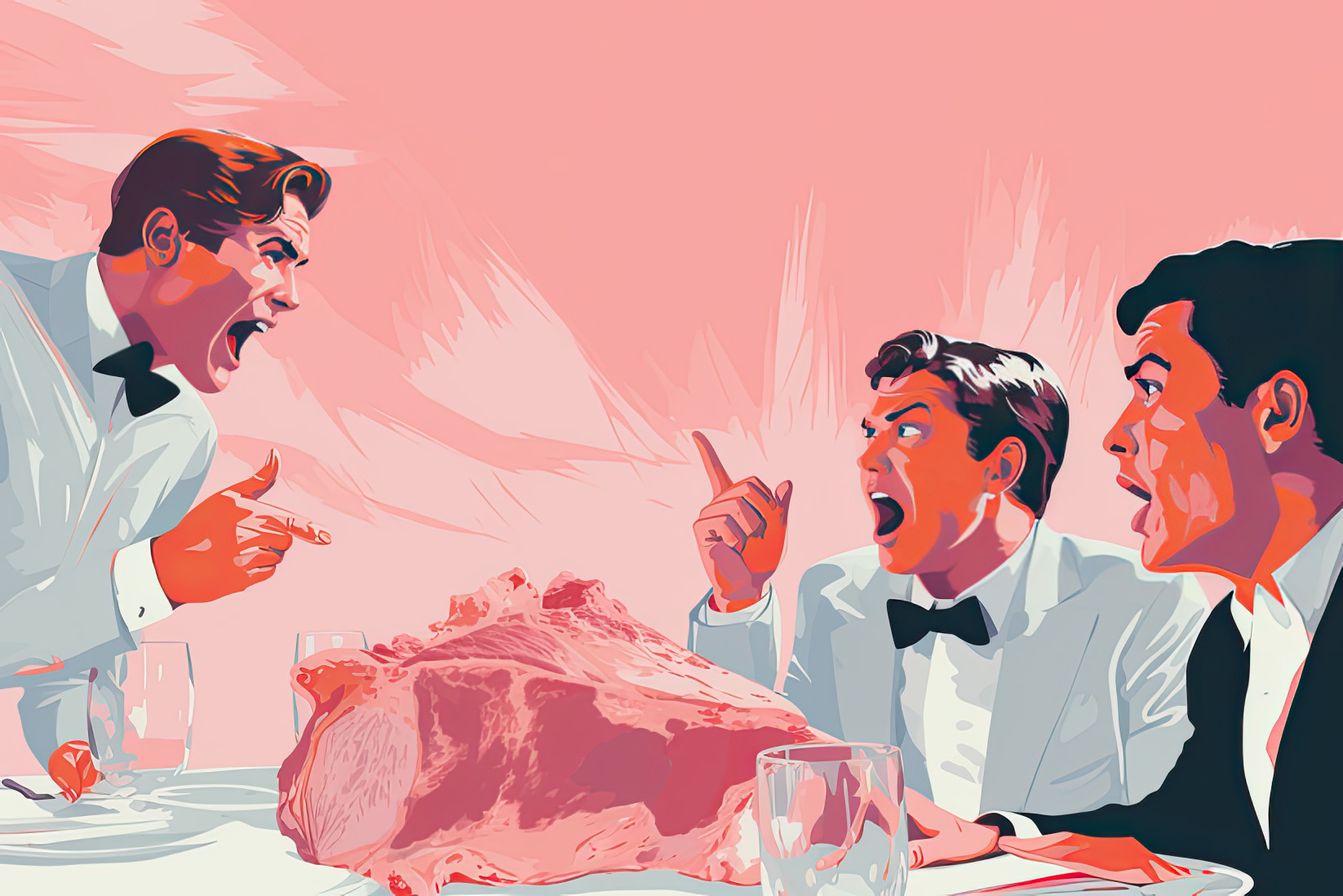Summary: The idea of 3D-printed meat is generating a mix of excitement and skepticism. Proponents see it as a solution to animal welfare and environmental concerns, as well as health and sanitation problems; however, detractors have reservations about its naturalness and possible alignment with specific agendas. This article delves into the intricacies of this debate, exploring the potential benefits and addressing the criticisms surrounding 3D-printed meat.
On Twitter, I mean “X,” everyone is bound to touch someone’s third rail at some point. Well, it finally happened to me. Lots of folks did not like my tweet in which I enthused about an Israeli company that, quelle horreur, 3D-prints a steak in one minute and a grouper fillet in three. The Israeli PM, Benjamin Netanyahu, tasted the product and seemed impressed. Many who saw my tweet were not. Turns out, folks are very particular about beef and feel that their steaks should originate within Daisy in Texas or Betty in Oklahoma. Well, 3D-printed beef does that and more. The process starts with extracting a few cells from a living, breathing animal, which are then grown and multiplied in a sterile environment, and finally printed to resemble the ribeye on a shelf at Wholefoods.
If this innovation takes off, the benefits of 3D-printed meat will be considerable. First, the need for animal suffering will diminish. We will need fewer cows, so we will raise and kill fewer of the beasts. Second, we will need less land for cattle, thus returning land to the wild – a goal long sought by environmentalists. We will also use less water and animal fodder – which should please the last of the deluded Malthusians. Third, 3D-printed meat may well turn out to be cleaner and healthier; animals on farms or in the wild are constantly exposed to viruses and parasites, which need to be medically treated before the meat becomes fit for human consumption. In a sterile lab environment, such problems will be minimized or eliminated.
[Some of the above applies to fish as well. Thanks to their more primitive nervous systems, fish don’t suffer as much as cows. However, since the oceans are being overfished due to a lack of proper property rights (i.e., the tragedy of the commons), it is more ecologically sensible to eat farmed fish, and even better to eat 3D-printed fish meat, which uses less space, water, and fish feed and gets around the problem of waste and disease.]
Traditional cattle ranchers will remain in the same economic niche as fancy Italian shoemakers. Yes, you can still go to Milano and have bespoke shoes made for $5,000. But most of us order Johnson and Murphy’s’ for $250 from Amazon. And so, the cognoscenti may go on enjoying the normal beef, while others switch to 3D-printed steaks. Ultimately, it is the market that will decide. The taste, texture, and price will have to be right. Once they are, most normal meat will go the way of cotton spinning, which was replaced by spinning jenny – much to the chagrin of the Luddites.
Affordability depends on mass production, and mass production depends on mechanization. Mechanize the process, and a poor manual laborer in Brazil might be able to have a proper steak dinner for the first time in his life. As for the rest of us, we will be able to stop pretending that a plant-based burger comes anywhere close to the real thing. What’s not to like? A lot, apparently. As far as I can tell, the critics’ objections are as follows:
- You can take my steak out of my cold dead hands.
I need not do that because I do not want to ban normal meat. I welcome 3D-printed meat as an expansion of customer choice, not as a replacement for normal meat. In a free market, some people will eat 3D-printed meat due to ethical considerations, such as animal welfare (in the same way that some customers prefer locally grown produce to food transported from afar). Others will eat 3D-printed meat because it becomes cheaper than normal meat. Some will eat it because they want to try a Wagyu steak but could never afford an organic one. After all, 3D-printed Wagyu steaks will benefit from the same efficiency gains as any other type of beef. Still others will eat 3D-printed meat because it becomes healthier than normal meat. - It is unnatural.
Just about everything in the modern world – from the corn we eat to the planes we fly – is unnatural. Humans suffer and die in natural environments (i.e., from viruses, bacteria, deadly fungi, heat, cold, dark, poisonous snakes, malarial mosquitos, lions, etc.) and thrive in unnatural environments (e.g., air-conditioned homes and offices, pizza delivery). Just because something is natural does not make it good – just think of earthquakes, tsunamis, volcanos, solar flares, and so on. In the past, nature dominated humans, and we died by the millions. Today, we tend to dominate nature for better (i.e., improved human survival) and for worse (i.e., some degree of environmental degradation). For more, see the naturalistic fallacy. - You are conspiring with Klaus Schwab.
I am doing the exact opposite. Schwab believes that the world cannot feed 8 billion humans and, consequently, we need to limit procreation and consumption. And yes, his Malthusianism makes him weirdly obsessed with eating bugs. (No way, Jose!) Moreover, neither Schwab nor the Davos crowd trust the market and freedom of choice. Their vision is one of a planned society presided over by a technocratic elite. In contrast, I believe that technological progress can make the lives of ever more people ever more bountiful (i.e., no limits on consumption), safer, healthier, and more interesting. If technological progress can result in environmental benefits, so much the better. The point is, human flourishing (call it anthropocentrism, if you will) is central to my thinking. I hope the kind of steak you eat will always be up to you.

